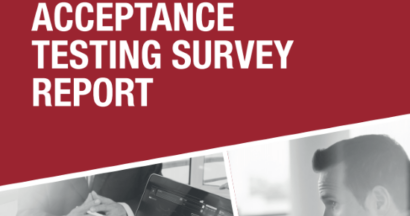User Acceptance Testing (UAT) can be a long process occurring near the end of the software change cycle, testing the software is usable, safe and meets its objectives and needs. Organizing, managing and executing any type of testing can be a substantial and daunting task.
Determine Timescales
Whilst implemented at the end of projects, it is advisable to start early and engage with all teams involved to ensure UAT is on the radar and considered in their planning. Often, departments consider the challenges and defects that will arise but do not realize that UAT identifies defects for fixing and overcoming.
When determining timescales, you also need to consider where resources will need to be implemented and the overall strategy which the UAT is being implemented to achieve. Part of the planning process will involve determining why the project is being carried out and the benefit which the organization is hoping to gain from the change.
Once the benefit is realized, it must be effectively communicated to all UAT participants so they understand what they need to be looking out for whilst testing to achieve success.

Things to consider
- What does the whole project look like?
- What are the business goals?
- What previous phases will the project go through?
- Who is involved in the whole project?
- The strategy and content used in previous test phases, and what can be reused?
- The resources set aside for fixing issues and bugs
- The planned date to set live, and is it flexible to allow changes?
- The extent of the changes, and how will they impact the business?
- Are there any known challenges and issues the change is bringing?
Analyze the Change
It’s necessary to determine the scope of the project to understand the changes that the business is hoping the software will bring and the resources and time needed to test it sufficiently.
When analyzing the change, if it is a unique software a business is developing, you can communicate expectations from previous teams and phases, including development and quality assurance, to understand the software’s expectations.
If it is a cloud-based software or package being implemented, obtain data from other users via forums and other channels to gauge the scale of the testing and resources needed.
Things to consider
- Significance of change
- The scale of the change
- Systems that will be impacted
- Business teams affected and the number of people who will be using the software
- The existing assets affected
- Input from the provider and
- reviews from clients
Determine Impact of Changes and Risks
By conversing with those involved with the system, that being the system architects if developing software internally or with the software provider, determine the impact of changes on the business. It is always important to remember that whilst the scale of a project and impacts can be closely related; it is not for certain that small changes only result in small impacts but rather result in disproportionately large impacts to the business. Therefore, it is important to assess each change accordingly and determine its impact to efficiently plan User Acceptance Testing.
Things to consider
- Impact on current systems
- Impact on the overall business and how affected systems can impact further impact the business
- Impact on IT and other infrastructure
- The risk to the business from undetected errors
- Risk of timescales not being met
- The scope of the testing required
The UAT process is dynamic and will not always necessarily follow the same approach. It’s, therefore, important to determine the scope of the testing project to gain a realistic idea of timescales and resources needed.
The Ultimate UAT Guide explores the UAT process holistically, providing a thorough understanding of optimizing User Acceptance Testing to understand the proposed change better.











